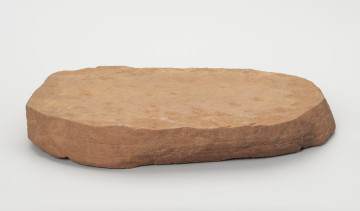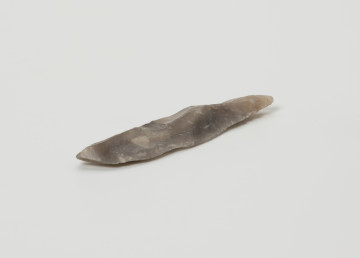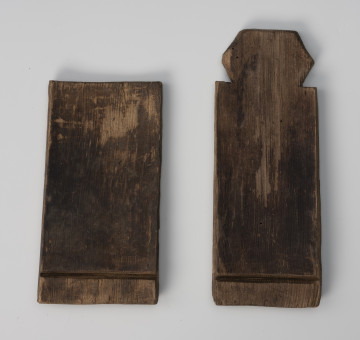
Polishing tablet
3100 p.n.e. — 2300 p.n.e.
National Museum in Szczecin
Part of the collection: Stone Age
Due to its convenient location on the edge of the Płoni valley near the Beech hills, the site in Jezierzyce, now one of the districts of Szczecin, had been repeatedly settled by different groups of people from the late Palaeolithic to the late Neolithic. A crushed quartzite stone was revealed during the 1974-75 excavations in the site section linked to the settlement of the middle Maglemose culture (c. 7800-7000 BC), on the verge of the flint artefact assemblage. This type of tool formed an essential element in the tools used by prehistoric flintknappers. Depending on their weight and type of material, the debitage obtained had different characteristics, so it is reasonable to assume that the prehistoric flintknappers, like their contemporaries, owned sets of hammers used in different situations. The item described here is very small and was mainly used for retouching and edge preparation, as evidenced by the marks preserved on the poles and one of the artefact's sides. Their orientation indicates that the flintknapper who owned the hammer was right-handed. Hard hammers are extremely valuable as artefacts, providing information not only on flintknapping technology but also on the social behaviour and demography of prehistoric societies. It is quite easy to identify lateralisation, i.e., right- or left-handedness, of their owner. It stems from the fact that depending on which hand is dominant, the preserved handling marks on the artefacts will be oriented differently. As hammers are not always adequately identified during excavations, this is a relatively rare category of historical objects. Michal Adamczyk
Author / creator
Object type
hammer
Technique
hard-hammer knapping
Material
quartz
Origin / acquisition method
field research
Creation time / dating
Creation / finding place
Owner
Muzeum Narodowe w Szczecinie (1945- )
Identification number
Location / status

3100 p.n.e. — 2300 p.n.e.
National Museum in Szczecin

7800 p.n.e. — 7000 p.n.e.
National Museum in Szczecin

901 — 1200
National Museum in Szczecin
DISCOVER this TOPIC
Museum of King Jan III's Palace at Wilanów
DISCOVER this PATH
Educational path